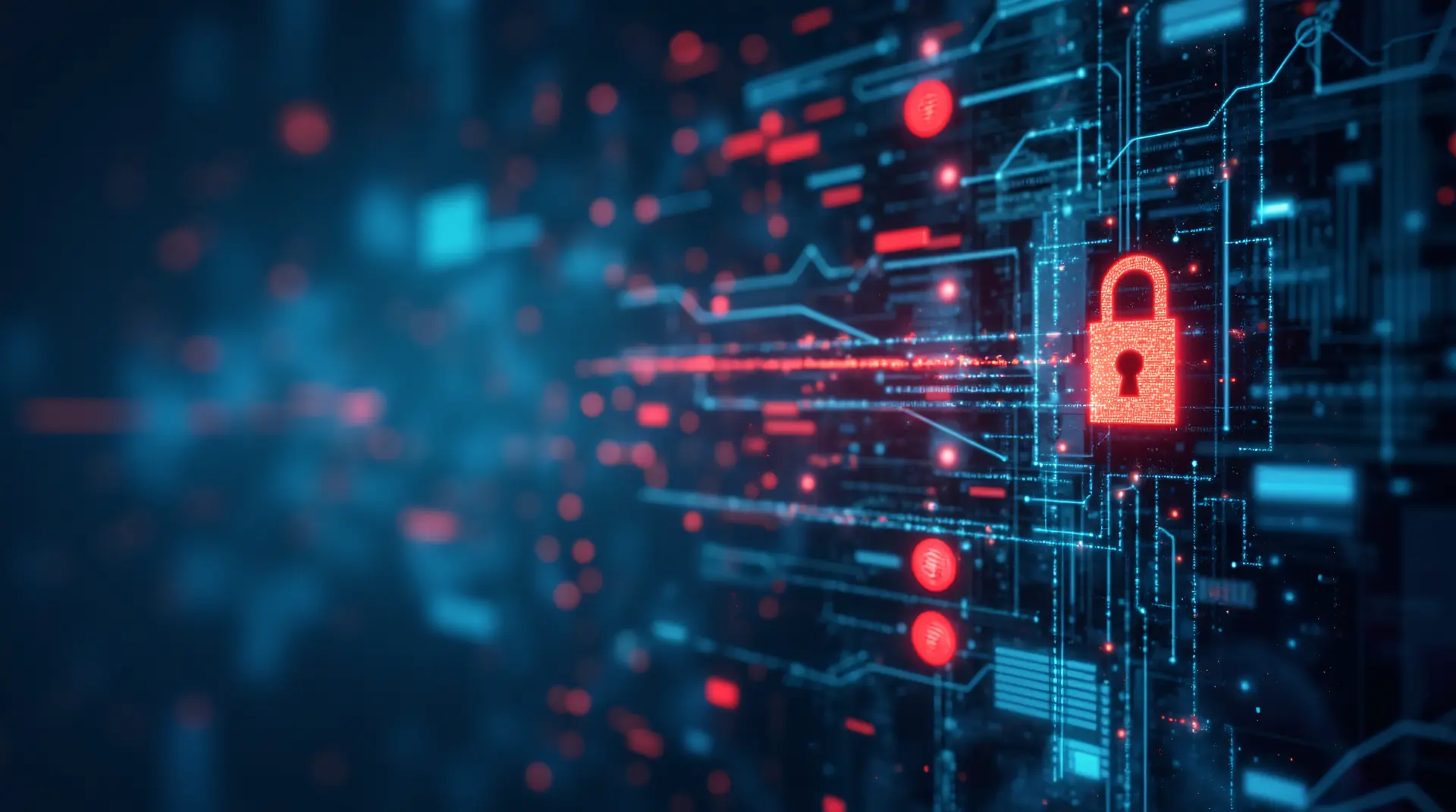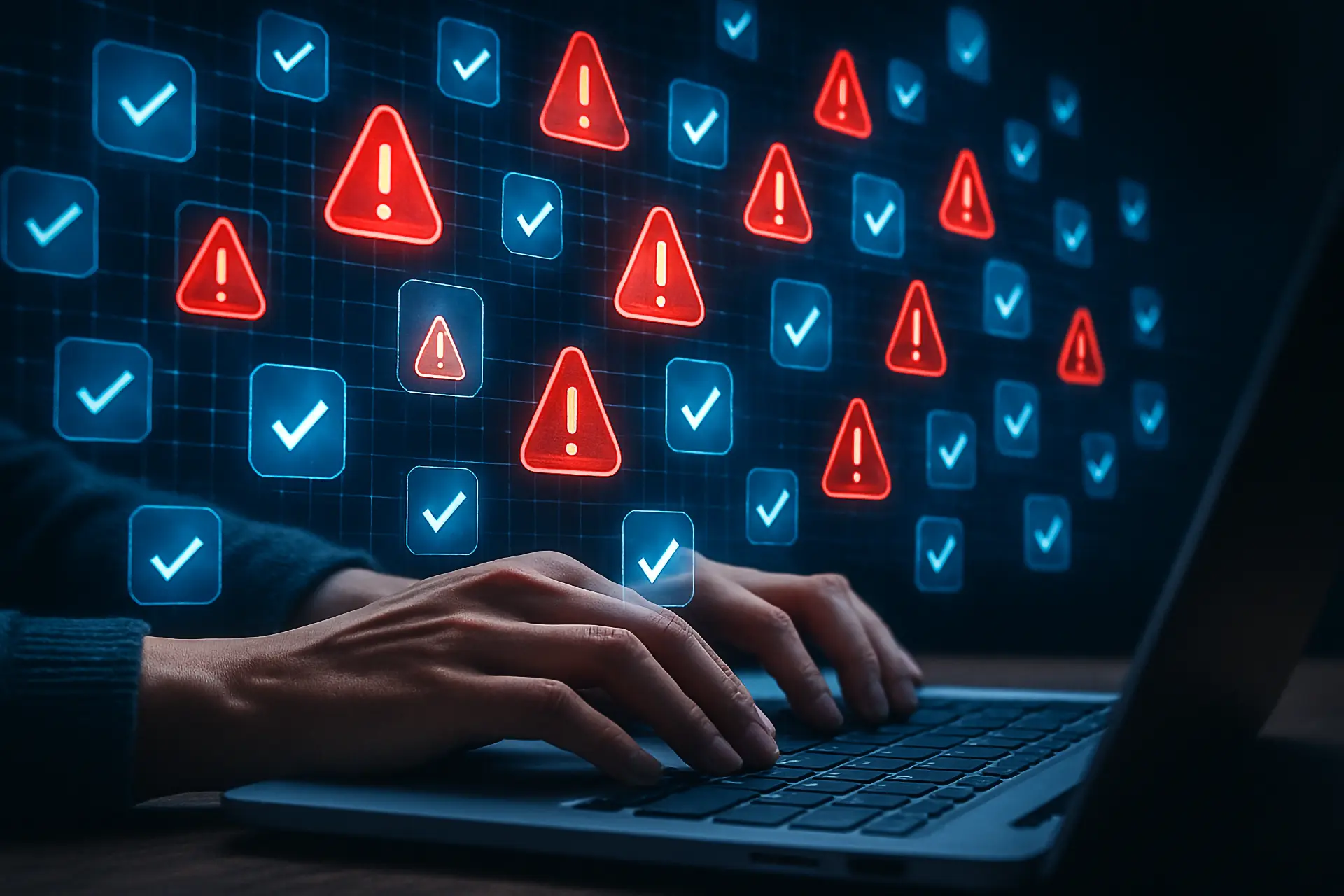Table of contents
- What does vulnerability management mean
- What are vulnerability management systems
- The vulnerability management process
- The importance of prioritization and context
- Integration with other security tools
- Compliance and vulnerability management
Vulnerability management is an essential pillar of IT security. Vulnerability management systems allow you to detect, assess, prioritize and resolve vulnerabilities that can be exploited by cybercriminals to compromise networks, applications or devices.
This article explores in depth what vulnerability management means, how to manage vulnerabilities in a modern IT infrastructure and what tools to adopt to effectively address each new vulnerability that arises over time.
What does vulnerability management mean
Vulnerability management is the ongoing process of identifying, classifying, prioritizing, remediating, and documenting vulnerabilities in an information system. It is not a one-time activity, but a lifecycle that allows IT teams to stay constantly aligned with emerging threats.
A vulnerability is a weakness in an operating system, application, or IT resource configuration that can be exploited by an attacker.
Example
A misconfigured firewall or an outdated software library can be a gateway for destructive cyber attacks. Vulnerability management helps you anticipate these risks before they result in security incidents.
What are vulnerability management systems
Vulnerability management systems are software tools designed to automate vulnerability scanning, analyze the results, provide recommendations for remediation of vulnerabilities, and monitor the entire vulnerability management process.
Among the most popular platforms we find:
- Nessus
- Qualys
- Rapid7 InsightVM
- OpenVAS
- Microsoft Defender Vulnerability Management
These tools perform scheduled scans for known vulnerabilities on networks, devices and applications. The results are then compared to updated databases (e.g. CVE – Common Vulnerabilities and Exposures) to assess their degree of criticality.
Example
A typical use case is the weekly scan of all company servers to detect new vulnerabilities introduced by software updates or system misconfigurations.
The vulnerability management process
The vulnerability management process is divided into five main phases:
1. Discovery
Identify all IT assets to monitor: servers, endpoints, network devices, applications. It is essential to have a complete and up-to-date inventory.
2. Vulnerability Scanning
Automated tools scan the infrastructure for known vulnerabilities. This can be done in agent-based or agentless, internal or external mode.
3. Evaluation and prioritization
Not all vulnerabilities are created equal. Some can be easily exploited and cause serious damage, others are less critical. The assessment is based on metrics such as the Common Vulnerability Scoring System (CVSS) and the specific context of the organization.
4. Resolving vulnerabilities
Priority vulnerabilities are addressed through patching, temporary mitigations, updates, or configuration changes. The IT team must work closely together to ensure timely action.
5. Verification and reporting
The effectiveness of the resolution is verified and each activity is documented for auditing, compliance and continuous improvement purposes.
This lifecycle must be repeated continuously to ensure that each new vulnerability is promptly addressed, mitigating risk before it can be exploited.
How to manage vulnerabilities in an organization: strategy, technology, and culture
Managing vulnerabilities in a modern company is a crucial and complex activity, which goes far beyond the use of a software tool. Cyber security is not achieved with a “plug-and-play” solution: it requires a systemic approach that integrates advanced technology, well-defined processes and a security-oriented corporate culture.
In this in-depth study, we analyze in detail each element of proper vulnerability management, explaining how to address the problem effectively and sustainably over time.
1. Automate vulnerability scans
The first operational step is to automate vulnerability scanning using professional tools (Nessus, Qualys, OpenVAS, etc.). Automation allows you to run regularly scheduled scans on all critical IT resources: servers, endpoints, network devices, cloud environments, containers, and application software.
# Example of running an automated scan with OpenVAS from terminal
gvm-cli ssh --hostname 192.168.1.100 --gmp-username admin --gmp-password 'password' << EOF
<create_target>
<name>Internal Servers</name>
<hosts>192.168.1.10-192.168.1.50</hosts>
</create_target>
EOFThis automation ensures that any new vulnerabilities are detected promptly, even in dynamic environments such as DevOps or microservices-based ones.
2. Correlate data with security monitoring systems (SIEM, EDR)
Vulnerability management involves integrating the collected data with other sources of information, such as system logs and events detected by security monitoring tools.
A SIEM (Security Information and Event Management) allows you to correlate suspicious events with the presence of known vulnerabilities.
Example
If a SIEM detects anomalous behavior on a server that is vulnerable to a Remote Code Execution (RCE) attack, the system can generate a high-priority alert.
Similarly, Endpoint Detection and Response ( EDR ) tools can automatically isolate a compromised device whose vulnerability allows unauthorized remote access.
In mature environments, you can also use a machine learning engine to correlate vulnerability data with recurring attack patterns.
3. Implement an internal security orchestration flow (SOAR)
Simply identifying vulnerabilities is not enough if it is not accompanied by a rapid operational response. This is where Security Orchestration, Automation and Response (SOAR) comes into play, a series of automated flows that allow the IT team to respond to threats in a structured way.
A typical workflow might be the following:
- vulnerability management system detects a critical vulnerability on a web server.
- The SIEM receives the event and forwards it to the SOAR.
- SOAR activates a playbook that:
- Notify Security Team via Slack/Email
- Performs a system backup
- Apply a temporary firewall rule to block suspicious traffic
- Start an automatic patching task
This automation dramatically reduces response times and limits the risk of serious security incidents
4. Keep operating systems and applications up to date
Patch management is one of the most effective tools in vulnerability management. A significant percentage of cyber attacks exploit known flaws for which a patch is available.
However, patching critical environments requires coordination and planning. It is essential to:
- Establish regular maintenance windows
- Test patches in staging environments
- Automate patching on non-critical systems
Tools like WSUS, Ansible, Puppet, or cloud-native solutions (e.g., AWS Systems Manager Patch Manager) can help you fix vulnerabilities quickly, reducing your exposure to risk.
5. Involve the IT team and CISOs in setting priorities
Effective management cannot exist without human involvement. The IT team, the CISO and, ideally, management must collaborate in defining intervention priorities.
A useful framework is the risk-impact matrix:
| Vulnerability severity | Likelihood of exploitation | Recommended action |
| High | High | Instant patching |
| High | Low | Temporary mitigation |
| Low | High | Proactive monitoring |
| Low | Low | Planned resolution |
This approach allows you to allocate resources efficiently, addressing vulnerabilities that can be exploited most easily and with the greatest potential for damage.
6. Document and continuously improve the process
Vulnerability management activity must be documented precisely: scan dates, patches applied, critical issues resolved, incidents avoided. This not only helps with auditing and compliance (e.g. PCI DSS, ISO 27001), but also allows you to:
- Evaluate the effectiveness of the strategies adopted
- Identify bottlenecks
- vulnerability detection and remediation cycle
- Regular reporting and analysis of security KPIs (e.g. average patching time, number of active critical vulnerabilities) helps transform vulnerability management into a continuous improvement process.

The importance of prioritization and context
Vulnerability management can become ineffective if all threats are treated the same. A common mistake is to chase every new vulnerability without assessing the actual impact on the organization.
Example
A vulnerability on an isolated server in a test environment does not have the same urgency as a flaw on an exposed system in production.
vulnerability management systems use contextual prioritization techniques, taking into account not only the CVSS score, but also the criticality of the data being processed, the probability of its exploitation, and the value of the IT resources involved.
Integration with other security tools
One of the most important evolutions is the integration of vulnerability management with other tools in the cyber security ecosystem. This includes:
- Endpoint Detection and Response (EDR)
To isolate vulnerable devices - Security Information and Event Management (SIEM)
To collect and analyze related events - Identity and Access Management (IAM)
To manage privileged access on vulnerable systems - Firewalls and IDS/IPS systems
To protect entry points while waiting for remediation
These integrations enable you to remediate vulnerabilities faster and with greater accuracy, leveraging automation and Security Orchestration, Automation and Response (SOAR) to perform automated remediation and intelligent workflows.
Compliance and vulnerability management
Vulnerability management also helps companies meet compliance standards such as:
- ISO/IEC 27001
- GDPR
- PCI DSS
- NIS2
- HIPAA (for healthcare)
These standards require that any vulnerability that allows unauthorized access be identified and mitigated within a defined timeframe. Failure to comply can lead to security incidents, financial penalties, and reputational damage.
To conclude
Vulnerability management is not a one-off activity, but a continuous and strategic process that must be an integral part of every cyber security policy.
Thanks to modern vulnerability management systems , companies can reduce risks, protect sensitive data and address vulnerabilities before they become a concrete threat. The combination of automation, integration and awareness is today the key to building a resilient digital infrastructure.
Questions and answers
- What is vulnerability management?
It is the continuous process of identifying, assessing and resolving vulnerabilities in IT systems. - What are vulnerability management systems?
They are software tools that automate the scanning, analysis, and resolution of vulnerabilities. - What are the steps in the vulnerability management process?
Discovery, scanning, assessment, remediation, verification and reporting. - Why is vulnerability scanning important?
To identify weaknesses in systems before they are exploited by attackers. - What tools are used to manage vulnerabilities?
Nessus, Qualys, OpenVAS, Rapid7, and Microsoft Defender are some examples. - Does vulnerability management help prevent cyber attacks?
Yes, by anticipating and fixing weaknesses in your IT infrastructure. - How is the criticality of a vulnerability assessed?
Through metrics such as CVSS score and business context. - What happens if vulnerabilities are not managed?
You risk attacks, theft of sensitive data, and serious security incidents. - How does vulnerability management integrate with other security systems?
Through SOAR, SIEM, EDR and IAM for complete protection. - Is vulnerability management mandatory for compliance?
Yes, it is required by regulations such as GDPR, PCI-DSS, and ISO 27001.
